Photos: Somali goats and sheep join the pilgrimage to Mecca
Thousands of livestock have been arriving in Saudi Arabia in time for the arrival of millions of Muslims from around the world on the annual pilgrimage to the holy city of Mecca. Many of those animals, that will be slaughtered over the next few weeks, would have started their journey from Somalia’s ports.
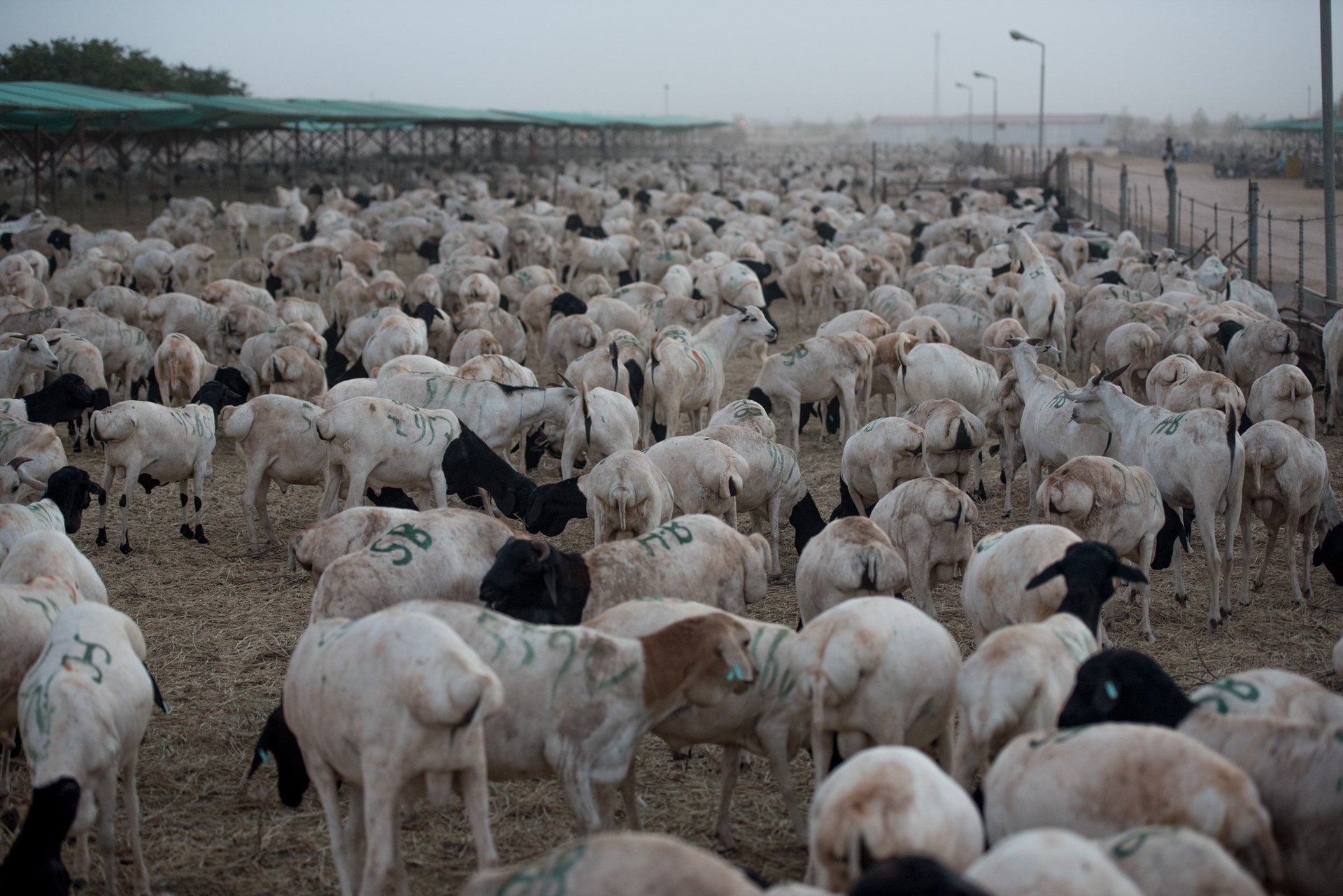

Thousands of livestock have been arriving in Saudi Arabia in time for the arrival of millions of Muslims from around the world on the annual pilgrimage to the holy city of Mecca. Many of those animals, that will be slaughtered over the next few weeks, would have started their journey from Somalia’s ports.
Livestock is an important mainstay in Somalia’s economy, contributing to about 40% of the country’s gross domestic product. In 2015, the Horn of Africa nation exported record 5.3 million animals, the highest such figure in two decades, according to the Food and Agriculture (FAO) organization.
The biggest market for Somali livestock is Saudi Arabia, which imports more than two-thirds of the goats, sheep and camels. Most of this importation takes place during the Hajj when millions of Muslims travel to Mecca. During the Eid ul-Adha, or Feast of Sacrifice festival, Muslims are expected to sacrifice an animal as part of the Hajj rituals.
At the port of Berbera, in the northwestern region of Somaliland, this increased demand for livestock in Mecca translates into good business and top dollar for Somalia’s livestock traders.
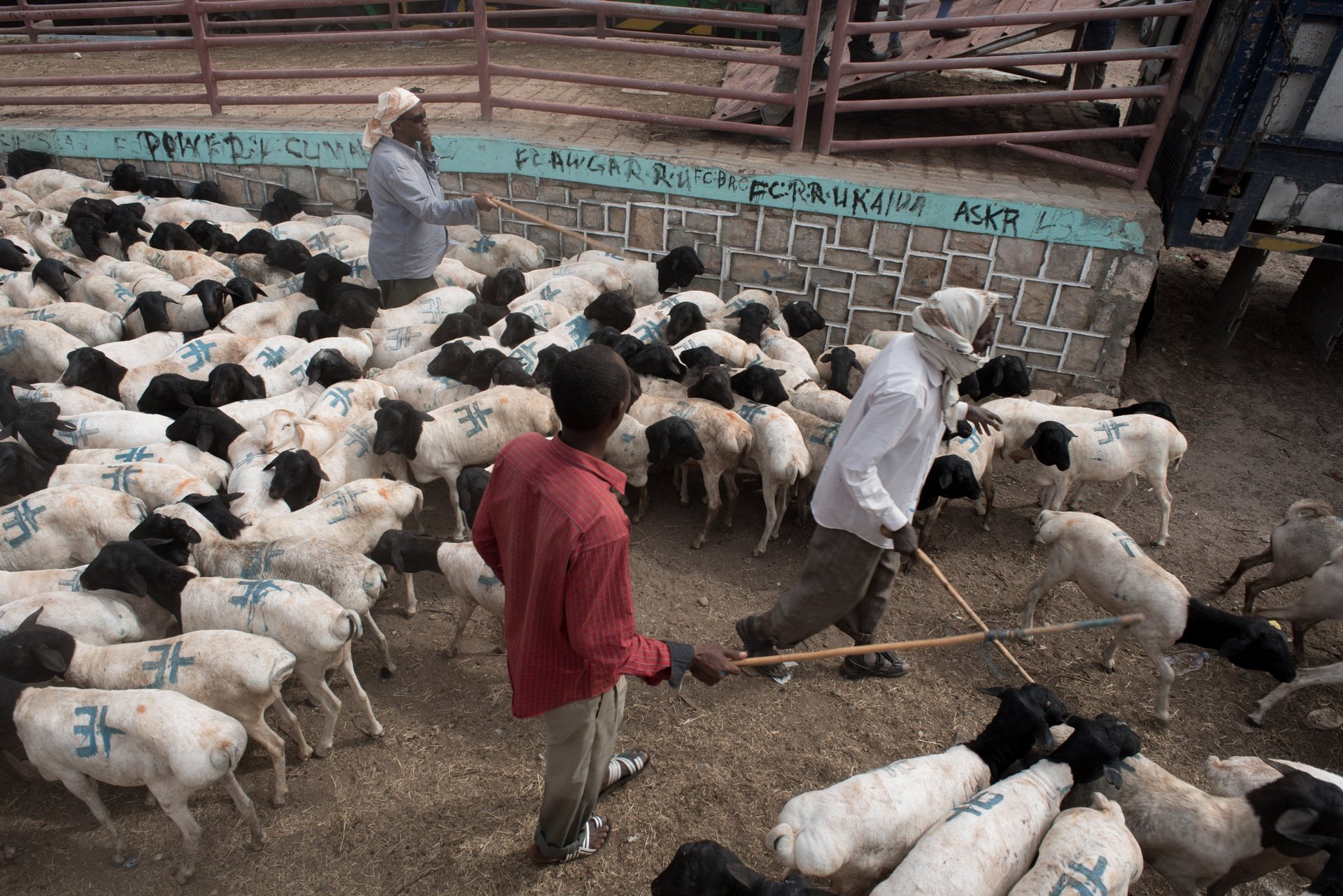
Livestock exports are the largest traded commodity in Somalia. In 2015 alone, traders pocketed $384 million in exports, and the industry witnessed an annual growth of 6%. FAO numbers estimate that the country has 13.9 million sheep, 13.2 million goats, 7.1 million camels, and 5.3 million cattle. Besides Saudi Arabia, animals are exported to other Middle Eastern countries like the United Arab Emirates, Qatar, Kuwait, Oman and Egypt.
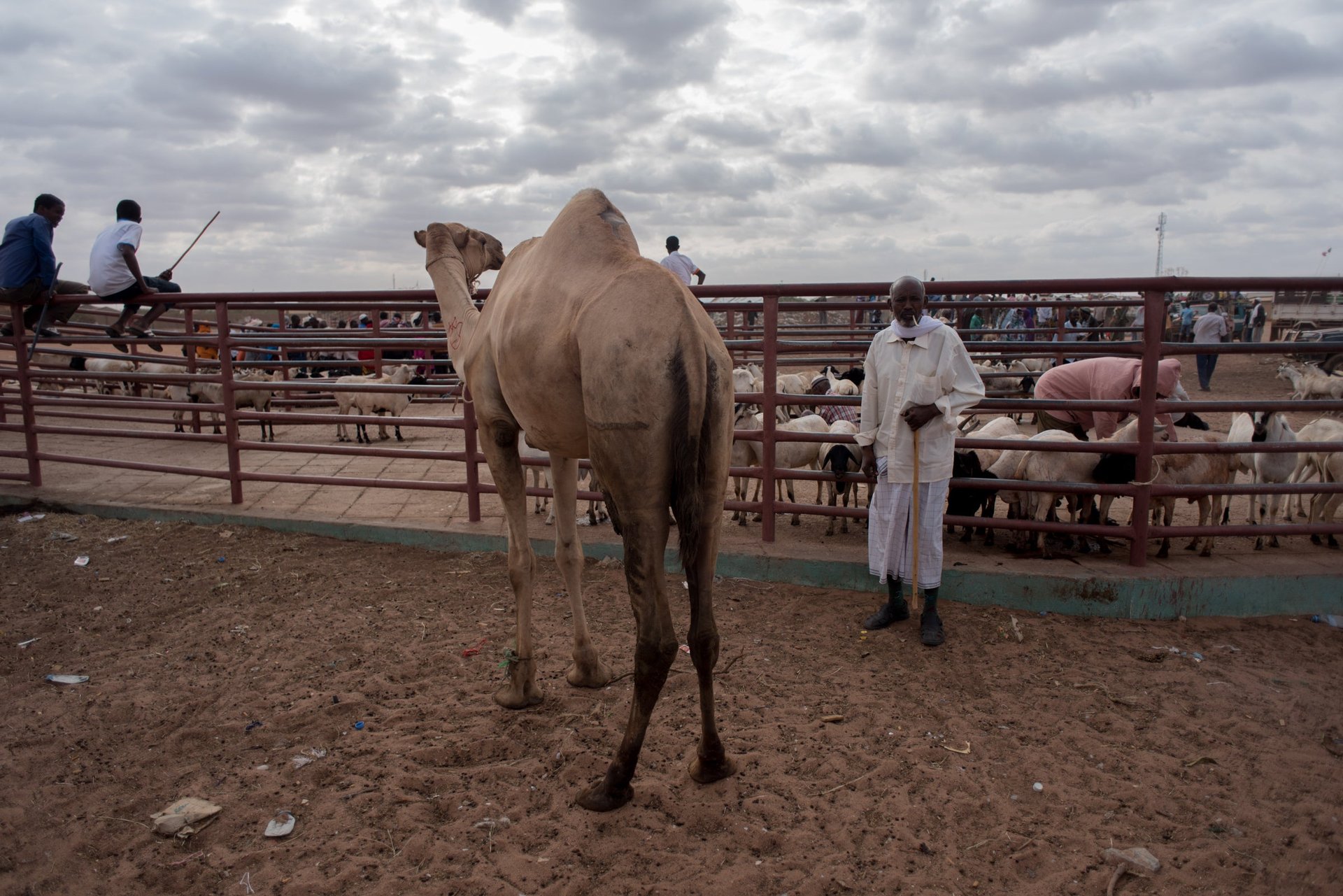
The industry has not always been as robust as it is today. Saudi Arabia banned Somalia’s livestock in 2000 following the outbreak of the Rift Valley Fever in the Horn of Africa region. According to the Center for Disease Control and Prevention, RVF is a fever-causing viral disease that infects domesticated animals and can be transmitted to humans. The ban, which lasted for nine years till 2009, disrupted exports, and caused significant economic and trade losses.
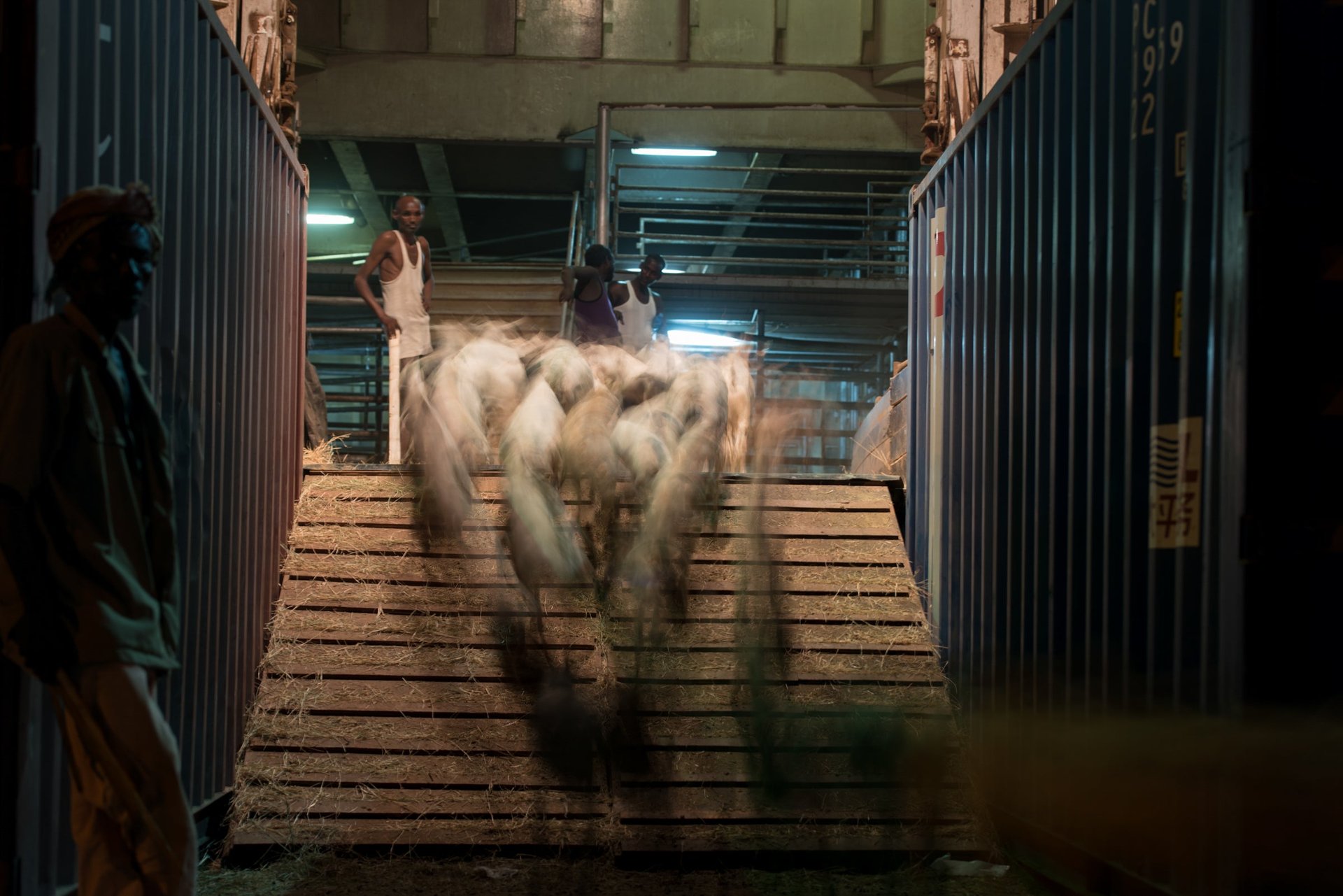
But since 2011, as the country has gone on the road to recovery, numerous local and international organizations have worked on improving the infrastructure surrounding livestock production. Vaccination centers, modern slaughterhouses and hide treatment facilities have sprang up across the country. In 2013, the Somali government even instituted a ban on slaughtering animals anywhere except at abattoirs.
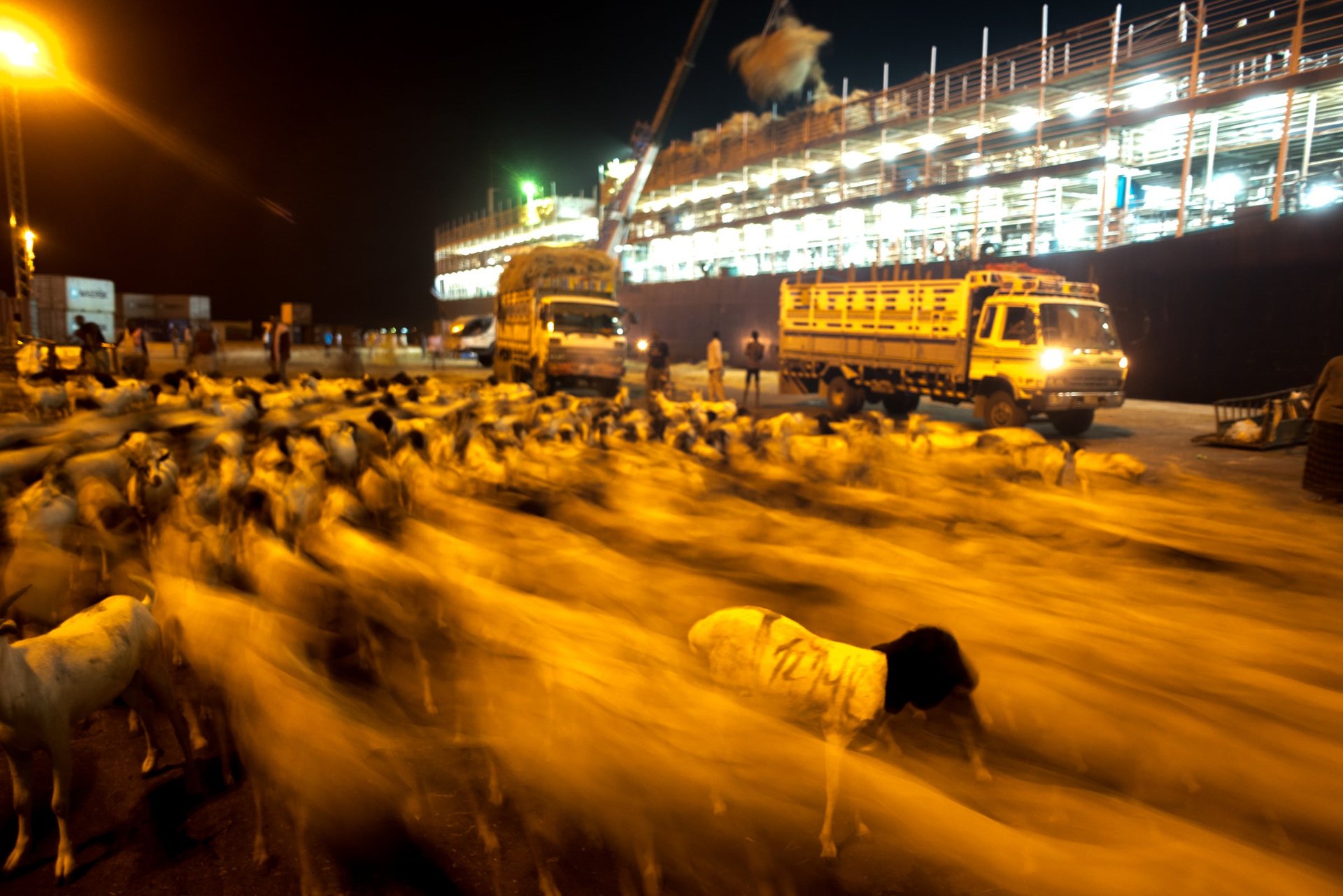
Amid this revival, the Berbera port located on the shores of the Red Sea, has become a vibrant hub for exporting livestock. In 2014, the port exported 3.4 out of the 5 million heads of livestock exported from Somalia. In early August, the region’s parliament approved a $442 million expansion deal with DP World, a company based in the United Arab Emirates.
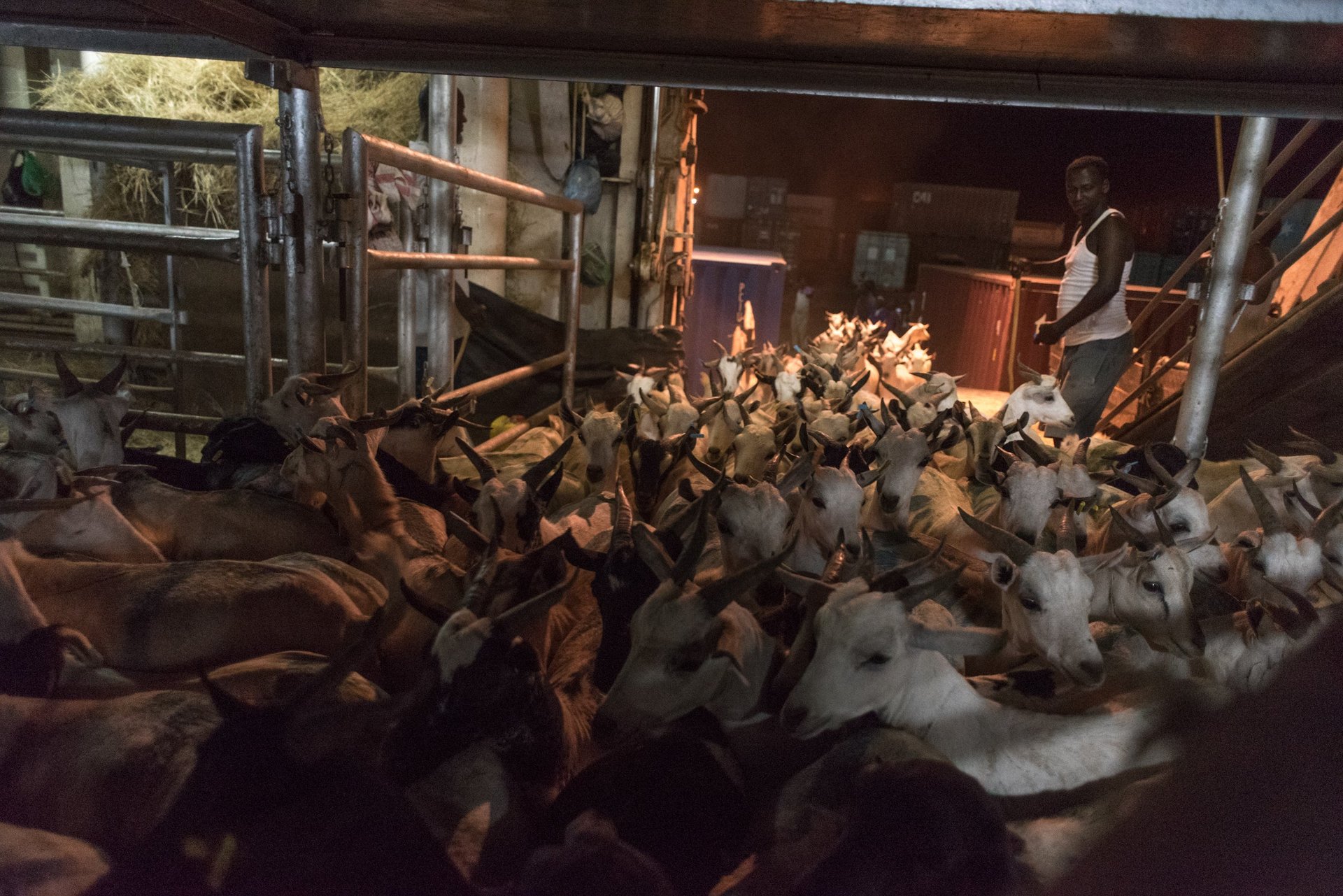
At the Berbera port, the sheep and goats are loaded at night due to the lower temperatures than in the daytime. A million animals can be held at the quarantine in Berbera port at any one time. The animals are held for a few weeks for screening and vaccination before being sent to Saudi Arabia. The ship pictured here, bound for Jeddah, Saudi Arabia, carried 65,000 sheep and goats.